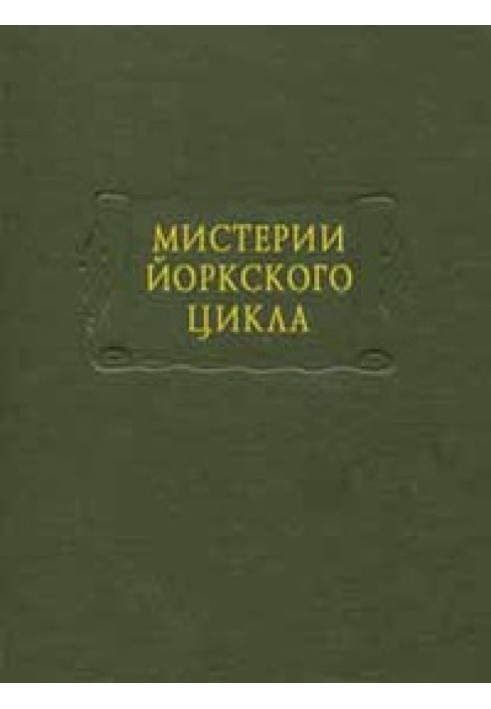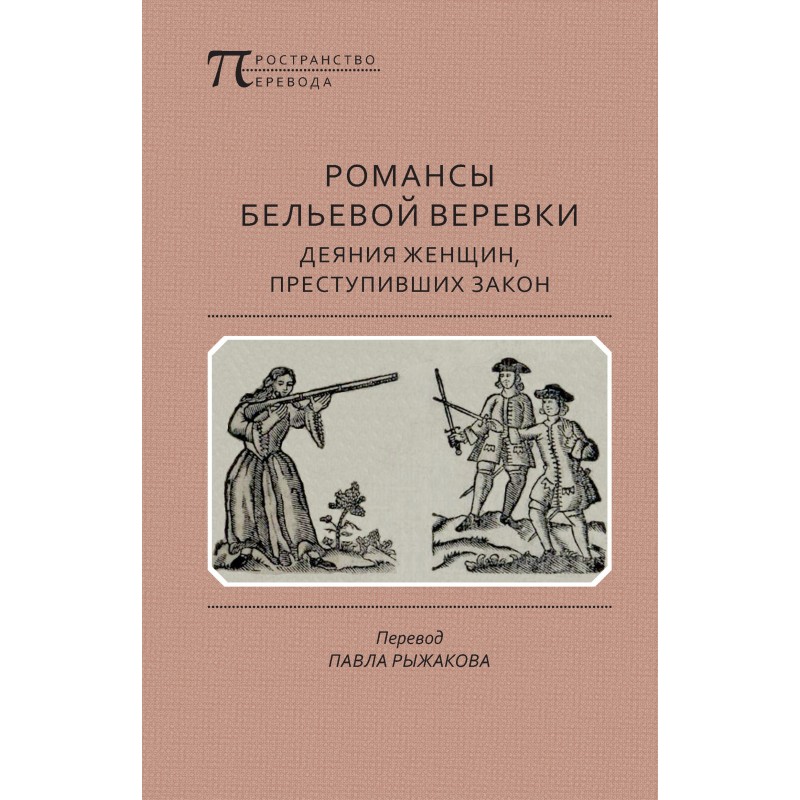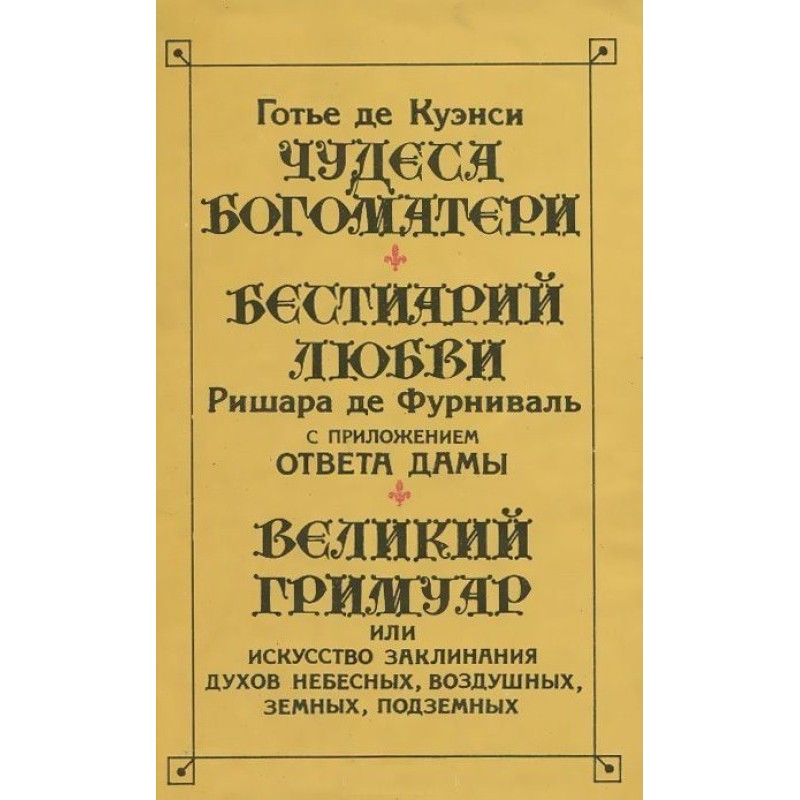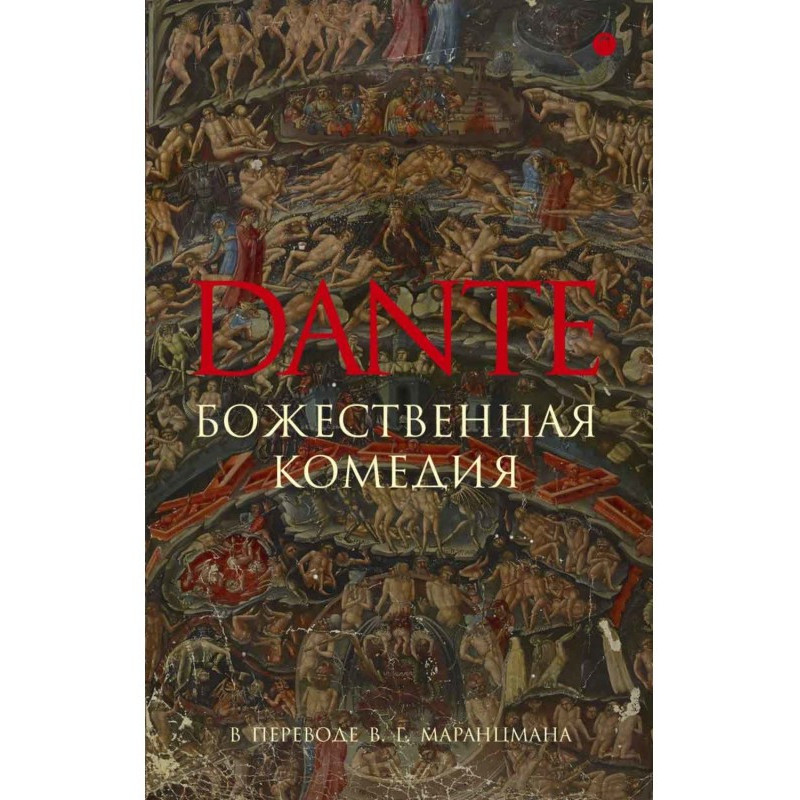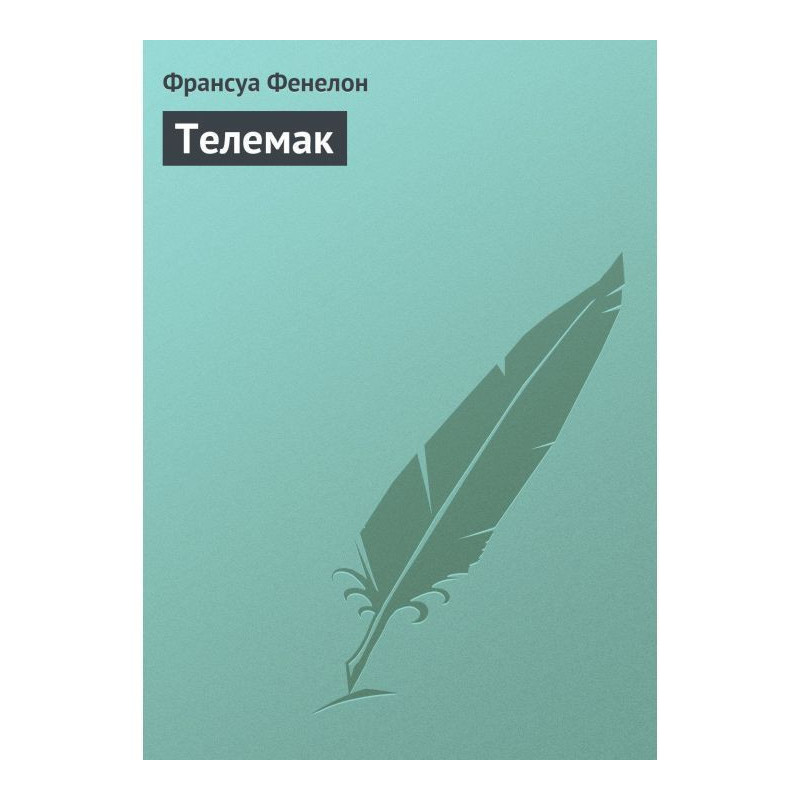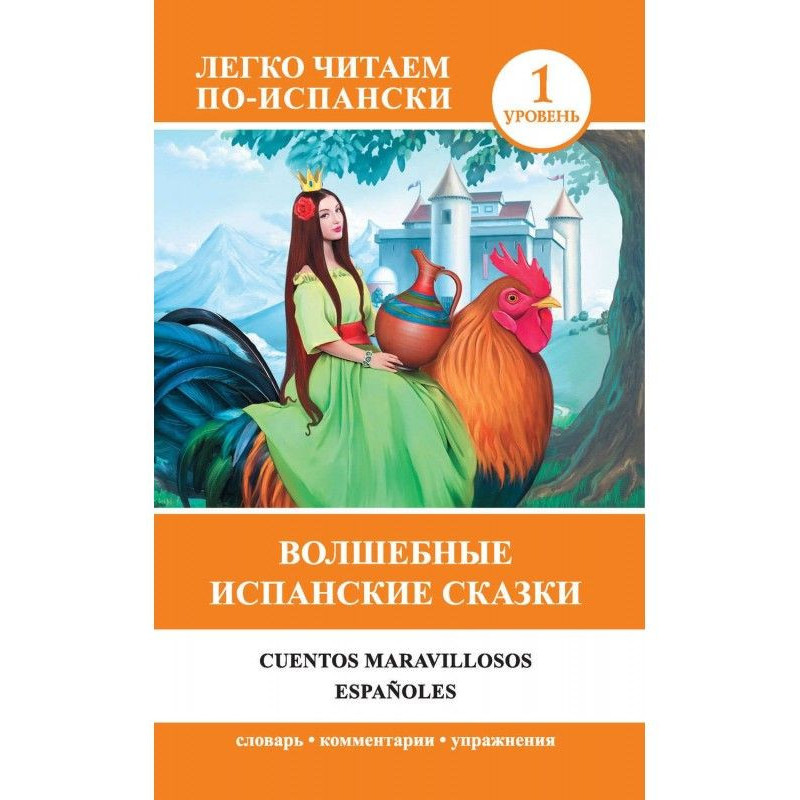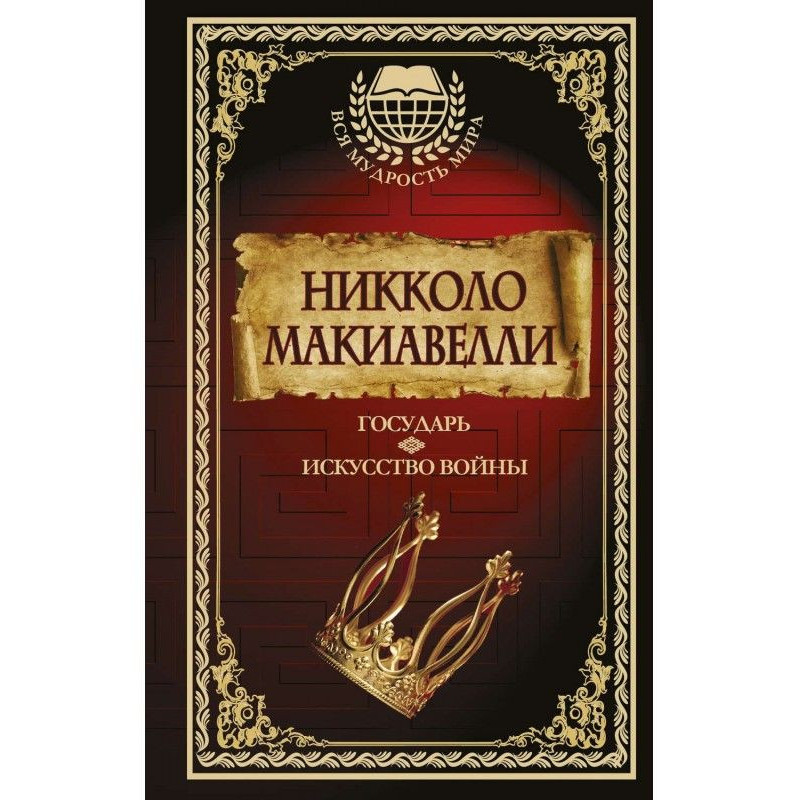York Mysteries
 Instant download
Instant download
after payment (24/7)
 Wide range of formats
Wide range of formats
(for all gadgets)
 Full book
Full book
(including for Apple and Android)
The first Russian translation and, accordingly, the first Russian edition of the famous and practically unknown to the domestic reader monument of the medieval theater. The cycle of the York Mysteries (XIV-XV centuries) consists of a number of small plays on biblical subjects from both the Old and New Testaments - from the Creation of the world to the Last Judgment. Manuscripts of several such cycles survive in Middle English. Of all of them, the York cycle is considered the most successful and best preserved. In the late Middle Ages, mysteries were played with great success in cities by non-professional actors from among the artisans, invariably attracting huge crowds of spectators. Such plays, written in verse, were most likely composed by clerics, whose names have not reached us. They, apparently, also directed performances that lasted the whole day - from dawn to dusk. The plays were performed outdoors in several places in the city. The stage was a special carriage on wheels, which could move freely along the narrow medieval streets. One cart, on which this or that play was performed, was replaced by another, on which a new action was presented. Then she too left, and a third took her place. Similar performances occurred in England once a year, in midsummer, shortly after Trinity, on the Catholic feast of Corpus Christi, for almost three centuries - from the 14th to the 16th - and gradually ceased with the advent of the Reformation. Mystery cycles had an undeniable influence on Elizabethan playwrights (including Shakespeare), who continued the traditions of medieval theater. In addition to the plays themselves, the book contains a scientific article on the mysteries of the York cycle and a lengthy commentary. The book is also unique for its rich graphic range (approx. 250 ill.), which is based on miniatures from medieval illuminated manuscripts. The publication is intended both for professionals, historians of theater and literature, and for the widest range of readers interested in medieval culture and the perception of Holy Scripture in it. CONTENTS: MYSTERIES OF THE YORK CYCLE. Per. V.S. Sergeeva1. Tanners' Guild. The creation of the world and the fall of Lucifer (8).2. Plasterers Guild. Five days of creation (20).3. Comb Makers Guild. God creates Adam and Eve (30).4. Fuller's Guild. God places Adam and Eve in the Garden of Eden (38).5. Guild of coopers. Disobedience and the Fall of Man (46).6. Guild gunsmiths. Expulsion of Adam and Eve from Paradise (58).7. Guild of Glovers. Sacrifice of Cain and Abel (68).8. Shipbuilders' Guild. Construction of the ark (78).9. Guilds of fishermen and sailors. Noah, wife, flood and its end (88).10. Guild of parchment makers and bookbinders. Abraham sacrifices Isaac (108).11. Stocking Guild. The exodus of the Israelites from Egypt, the ten plagues and the crossing of the Red Sea (126).12. Spice Sellers Guild. Annunciation. Mary visits Elizabeth. (150).13. Guild of tinsmiths and foundries. Joseph's doubts about Mary (164).14. Roofers Guild. The road to Bethlehem. Birth of Christ (180).15. Candle Makers Guild. Angels and shepherds (190).16. Masons' Guild. The coming of the three kings to Herod (200).17. Guild of Goldsmiths. The coming of three kings to Herod. Adoration of the Magi (206).18. Guilds of hatters, masons, day laborers. Purification of Mary. Prophecies of Simeon and Anna (222).19. Guild of Equestrians. Flight to Egypt (246).20. Guild of Belt and Hardware Manufacturers. Massacre of Infants (260).21. Guild of Spur Makers and Stirrup Makers. Christ with teachers in the Temple (276).22. Barber Guild. Baptism of Jesus (292).23. Blacksmiths Guild. Temptation of Jesus (302).24. Leatherworkers' Guild. Transfiguration (314).25. Guilds of hatmakers and hatmakers. A woman taken in adultery. The Raising of Lazarus (328).26. Furriers' Guild. Entry on a donkey into Jerusalem (340).27. Cutlers' Guild. Conspiracy against Christ (366).28. Bakers Guild. Last Supper (384).29. Shoemakers' Guild. The Sorrow of Christ and Betrayal (396).30. Manufacturers Guild bows and arrows. Peter denies Christ. Christ before Caiaphas (414).31. Guild of furniture makers and upholsterers. The dream of Pilate's wife. Christ before Pilate (438).32. Dyers Guild. Christ before Herod (468).33. Guilds of cooks and water carriers. Second trial of Pilate. Judas' repentance. Purchase of “land of blood” (492).34. Guild of Tiles. Pilate's Second Trial (Continued) (514).35. Shearers' Guild. Christ is led to Golgotha (538).36. Nail Makers Guild. Crucifixion of Christ (558).37. Butchers Guild. Death and burial of Jesus Christ (576).38. Guild of Saddlers. Descent into Hell (596).39. Carpenters Guild. Resurrection. Fear of the Jews (616).40. Guild of Winemakers. The appearance of Christ to Mary Magdalene after the Resurrection (640).41. Teamsters Guild. Pilgrims on the way to Emmaus meet Christ (650).42. Guild scribes. Thomas's disbelief (662).43. Tailors' Guild. Ascension (674).44. Potters Guild. Descent of the Holy Spirit (690).45. Drapers' Guild. Death of Mary (704).46. Weavers' Guild. Appearance of the Mother of God to the Apostle Thomas (716).47. Guild of Hotel Keepers. Assumption and Coronation of the Virgin Mary (734).48. Guild of textile merchants. The Last Judgment (746).APPENDICESAN.N. Gorbunov. From the creation of the world to its end (Mysteries of the York cycle) (767). Notes. Comp. V.S. Sergeeva, E.I. Volkova (831). List of abbreviations (865). List of illustrations. Comp. V.S. Sergeeva (866).
Data sheet
- Name of the Author
- Автор Неизвестен Европейская старинная литература --
- Language
- Russian
- Translator
- Валентина Сергеевна Сергеева
Reviews
Вражаюче відкриття середньовічного театру!
Книга "Містерії Йоркського циклу" є справжнім скарбом для всіх, хто цікавиться театральним мистецтвом та культурою середньовіччя. Це перше російське видання, яке відкриває перед читачами унікальний світ містерій, які виконувалися в XIV-XV століттях. Автори вдало зібрали п'єси, що охоплюють біблійні сюжети, і представили їх у доступному для сучасного читача форматі. Кожна п'єса, написана віршами, не лише розкриває глибокі моральні та релігійні теми, але й показує, як театральне мистецтво впливало на суспільство того часу. Ілюстрації, що супроводжують текст, додають візуальної привабливості та допомагають зануритися в атмосферу епохи. Це видання стане чудовим ресурсом як для професіоналів, так і для любителів театру, які прагнуть зрозуміти коріння сучасного театрального мистецтва. Рекомендую всім, хто хоче розширити свої знання про середньовічну культуру та театральну традицію!

